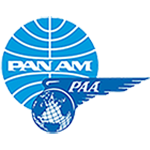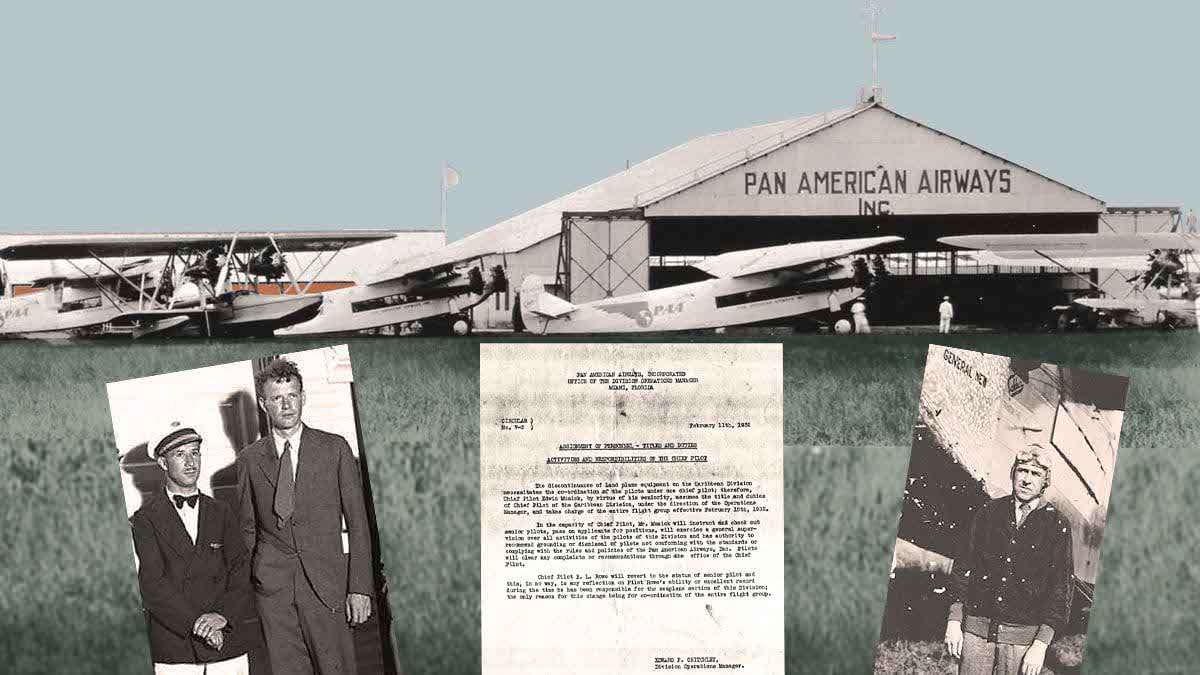PAA - 1932
MARCH
By Eric Hobson

"A Colleague in Crisis"
S-38 Charter from Compañía Nacional Cubana de Aviación Curtiss, S.A. (CNCAC)
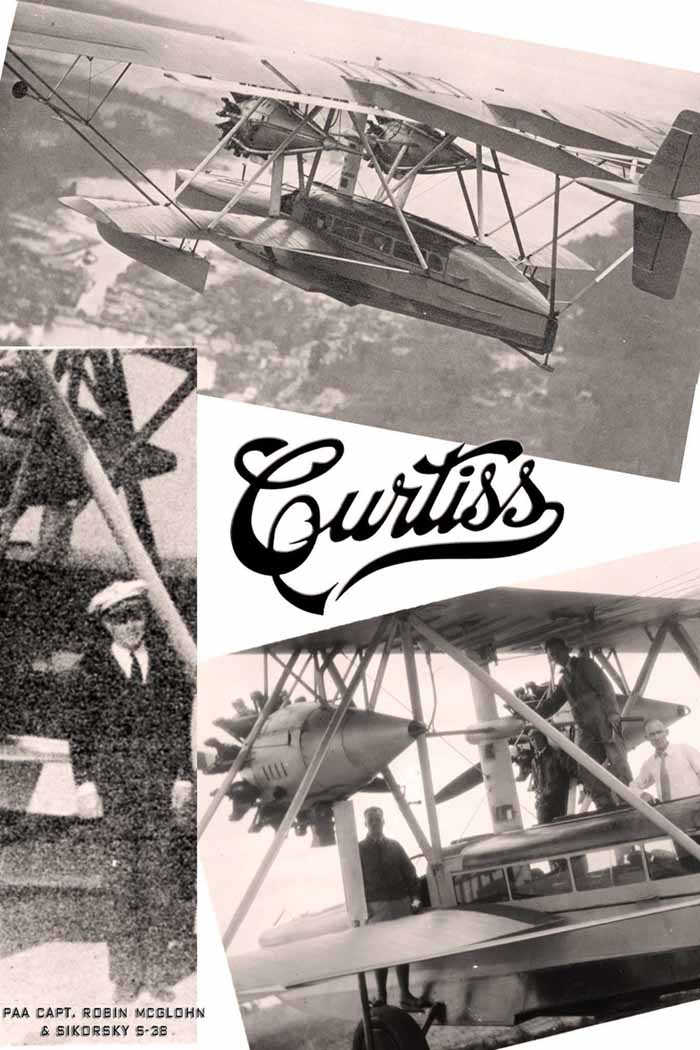
Photo compilation: Pan Am Historical Foundation and Mason/PAHF collection.
In Kingston, Jamaica the 5 p.m. Wednesday February 24th arrival was unusual, but the aircraft’s silhouette and engine sounds were familiar. The distinctive Curtiss logo on its tail boom, however, was completely unexpected.
The Sikorsky S-38 (NM 11) belonged to Compañía Nacional Cubana de Aviación Curtiss, S.A. (CNCAC) an airline that did not fly outside Cuba. The flying boat had Pan Am pilot Robin McGlohn peering through the cockpit’s windshield — another total surprise!
McGlohn was flying a chartered CNCAC airplane because Pan Am needed to assist Alan Winslow -- former WWI fighter pilot and hero, now Assistant Chief of the Foreign Department of Pan Am -- who was in Kingston for a few days to rest from injuries that had plagued him since the war. He was suddenly called back to New York to deal with the unforeseen illness of his wife Rose. And there were no Pan Am aircraft in Kingston positioned for the job.
The Cubana Sikorsky S-38 pushed off the Pan Am barge at Bournemouth Bath in Kingston Harbor at dawn Thursday, February 25, headed to Antilla on Cuba’s north coast, so that its single passenger, Alan Winslow, could rendezvous with a Miami-bound aircraft to fly him north to New York to deal with his family crisis.
On May 6, 1932, less than 3 months later, Pan American would acquire Cubana, dropping the name “Curtiss” and renaming it Compañía Nacional Cubana de Aviación or CNCA. Pan Am was the sole owner of Cubana until 1945 when their share was reduced to 52%.
Sources:
Kingston Gleaner, Kingston, Jamaica 2/25/1932.
Photo Montage: PAHF Collection, George Mason/PAHF Collection.

"The Seniority Puzzle"
Photo compilation: PAHF Collection
Pilot seniority lists are complex, particularly amidst rapid growth and personnel movement. In its first fifteen months of existence, PAA hired four pilots: Edwin “Ed” Musick (June 1927), Hugh Wells (October 1927), Casper “Cap” Swinson (February 1928), Robert “Bob” Fatt (May 1928).
With the acquisition of West Indian Aerial Express on October 16, 1928, Basil Rowe & Donald Duke joined the roster. By the start of 1932 PAA employed forty pilots.
From the outset Ed Musick had served as Chief Pilot for all land plane pilots in the Caribbean Division; Basil Rowe had served as Chief Pilot for all sea plane pilots in the Caribbean Division. But with the 1932 equipment rationalization, and with the company’s continuing mergers and acquisitions, the seniority challenge intensified.
The answer arrived at was novel: Recognizing Basil Rowe’s years spent building and flying the pioneering commercial airline West Indian Air Express, he was named “Senior Pilot” (No. 1 on PAA’s pilot seniority list) and Ed Musick took the #2 slot, followed by Bob Fatt, “Cap” Swinson and Don Duke. Musick remained Chief Pilot for the Caribbean Division.
Informing its readers of this realignment, The Kingston, Jamaica "Daily Gleaner" (3/3/1932, p.20) told its readers:
“This is in no way a reflection on the record or the ability of Pilot Rowe, who it will be remembered, flew the American Clipper on her maiden flight from the planeyard to Miami, and acted as Co-pilot to Colonel Lindbergh when he flew the giant aircraft on the first flight to Cuba, Jamaica, Columbia and Panama.”
Basil Rowe sat atop PAA’s Pilot List for twenty-four years until his retirement in 1956!

"Capt. Humphrey 'Hump' Toomey -- PAA's Brazil Anchor"
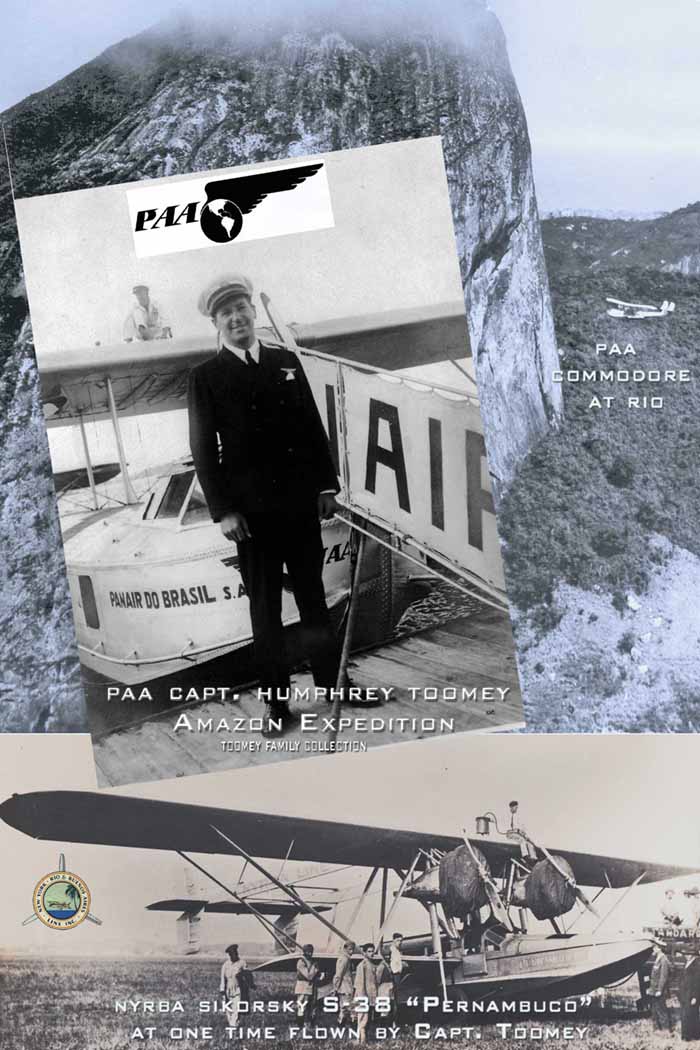 Photo compilation: PAHF Collection and Toomey Family Collection
Photo compilation: PAHF Collection and Toomey Family Collection
Humphrey W. “Hump” Toomey (U.S. Naval Academy, 1922) dropped the Consolidated Commodore (NC-661) onto the water off Dinner Key, returning to Miami for the first time in two-and-a-half years. His last Biscayne Bay sighting had been November 1929 when he lifted off in a Sikorsky S-38, Permanbuco, belonging to his prior employer, New York, Rio and Buenos Aires Line (NYRBA). When Pan Am acquired NYRBA ten months later in 1930, Toomey stayed on and had flown the South America route since.
He was back in Miami for two reasons: to meet with Miami-based PAA operations personnel because he was about to take over the Brazilian Division’s operations management; and, after twenty-eight months in Brazil, to get a change of scenery. Toomey needed a vacation.
Before he returned to Brazil and his new administrative post, Hump headed to Montana for three weeks with family. Certainly, Deer Lodge, Montana, in March was not Rio de Janeiro.
But Pilot Toomey wasn’t the only cog in PAA’s South American operations that needed time off: the flying boat that he flew from PAA’s Para, Brazil base (Consolidated Commodore NC-661; formerly NYRBA’s New York) was scheduled for complete overhaul. Whether or not that overhaul was finished before Toomey returned to Miami from Montana is not known.
Still, both man and machine headed south in the late spring of 1932 refreshed and ready to get back to work. *
Sources:

"Milestone: Miami to Havana to Miami to Havana..."
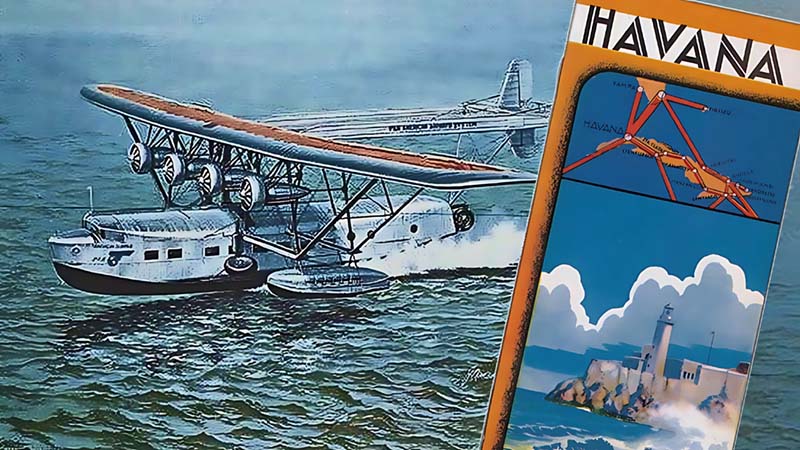
Photo compilation: Sikorsky S-40 painting courtesy @San Diego Air & Space Museum on Flickr, and Pan Am Havana Brochure (PAHF Collection).
By 2025 standards, 6,500 flights aren’t particularly attention-grabbing statistics (a week’s traffic at Atlanta-Hartsfield International Airport, for example). Yet, "Pan American Air Ways" trumpeted that number on March, 21 1932 bragging that
“planes of the Pan American Airways Systems passed the 6,500 mark in crossings of the straits by air between Florida and Cuba” and that the 6,500 “figure includes 182 trips made during the past 90 days by the American and Caribbean Clipper ships, America’s largest planes, between Miami and Havana.”
The route was a mere 228 miles. But each of those 228 miles were open-water miles using primitive multi-engine aircraft (Sikorsky S-38, Consolidated Commodore, and Sikorsky S-40 seaplanes*) and communication methods.
The two-a-day crossing average seems minuscule, too. In March 1932, however, this route load was among the world’s busiest, matching the pinnacle of European air routes, Imperial Airways’ (England) London-Paris cross-channel service!
By the end of 1931, that traffic volume allowed Pan Am to surpass “all water-borne craft combined” in bringing passengers into Miami. And, by October 1932 the number of Miami-Havana crossings reached 7,000 — with hundreds of thousands of Florida Straits crossings to follow.
* Aviation wags of the day disparaged the two Sikorsky’s design as “a collection of spare parts flying in formation.” Charles Lindbergh described the S-40 as a “flying forest of wires and struts.”

